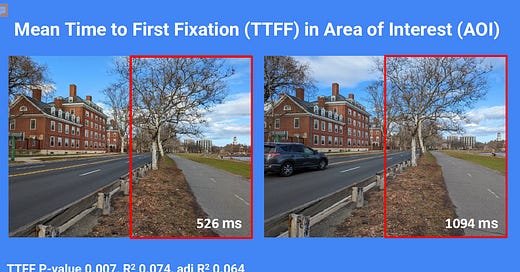Over the last decade, I have been working with Ann Sussman and a number of other collaborators to understand how we respond to places at a subliminal level. My book with Ann, Cognitive Architecture: Designing How we Respond to the Built Environment, had a second edition come out during the pandemic and it argues that these unconscious responses to places really matter. In some ways, these ingrained ways of reacting count more than our conscious processing around the buildings we enjoy, the parks we like to visit, and the plazas we socialize in.
If you want to know what someone thinks they want to see in a streetscape or urban neighborhood, you can ask them. Better is to study their autonomic responses: does their heart rate go up, where do their eyes dart to, how do their facial muscles react? Because we are evolved mammals, basically like any other animal - our hard-wired reactions appear to be a more reliable and more generalizable way to evaluate the best urban and architectural form.
With Ann and others, we started a new non-profit organization, The Human Architecture and Planning Institute, and one of our first research projects sought to understand how cars impact people in the public realm. With an amazing team of students, we sketched out a study looking at a street that is intermittently closed to car traffic Cambridge, Massachusetts. Then, last summer we extended it further and wrote a summary of the research in an article in Scientific American.
Here is a link to the article, with a teaser:
Car-Free Cities Are the Future, Biometrics Reveal (Scientific American, June 2023)
Thanks for reading, be sure to like and share!
Best,
Justin





"how cars impact people in the public realm"
To often with great kinetic energy.